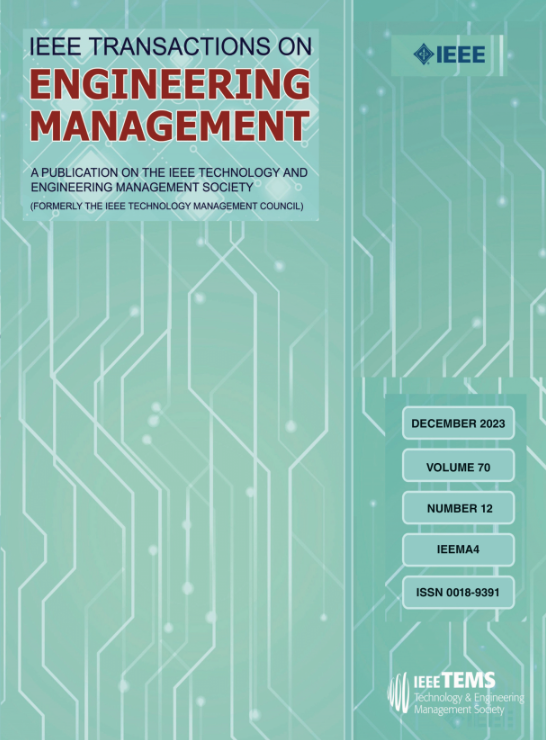Unpacking the Mechanism of the Economic Impact of University Interdisciplinary Research: A Topic Modeling Approach
IF 4.6
3区 管理学
Q1 BUSINESS
引用次数: 0
Abstract
Interdisciplinary research and the resulting interdisciplinary technology have garnered significant attention and resources because of their potential to offer innovative solutions for major societal challenges. Despite this interest, the literature on the economic impacts of interdisciplinary technology remains limited. This study aims to investigate the relationship between interdisciplinary university technology and its potential for commercial success. Drawing on the knowledge recombination view, our study proposes that the technology readiness level (TRL) and high coordination costs are two underlying factors that hinder the commercialization—indicated by patent licensing and reassignment to firms—of interdisciplinary university technology. On the basis of learning theory, we propose that three factors, namely, the inventor's industrial experience, university–industry engagement, and experiential learning over time, mitigate the challenges associated with a low TRL and high university–industry coordination costs, thereby increasing the propensity for commercializing interdisciplinary technology. To test our arguments, we employ a topic modeling method on 287 616 Chinese university patents to construct a topical diversity index for each patent, which measures each patent's level of interdisciplinarity. The regression analysis reveals that, for our novel definitions of patent topical diversity and the TRL introduced in this work, topical diversity is negatively associated with the TRL and, ultimately, the commercialization rate. Furthermore, inventor industrial experience, university–industry engagement, and time positively moderate the relationship between interdisciplinary technology and commercialization. Our research has important theoretical and practical implications for interdisciplinarity and technology commercialization.求助全文
约1分钟内获得全文
求助全文
来源期刊

IEEE Transactions on Engineering Management
管理科学-工程:工业
CiteScore
10.30
自引率
19.00%
发文量
604
审稿时长
5.3 months
期刊介绍:
Management of technical functions such as research, development, and engineering in industry, government, university, and other settings. Emphasis is on studies carried on within an organization to help in decision making or policy formation for RD&E.
 求助内容:
求助内容: 应助结果提醒方式:
应助结果提醒方式:


